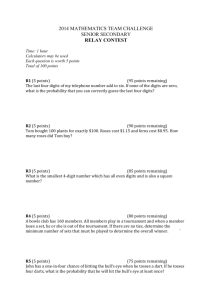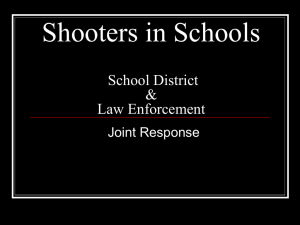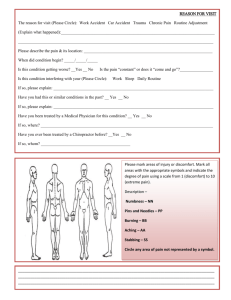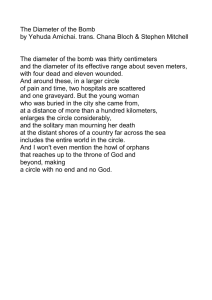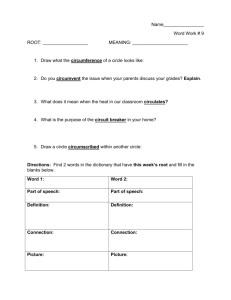fédération internationale de pétanque et jeu provençal
advertisement
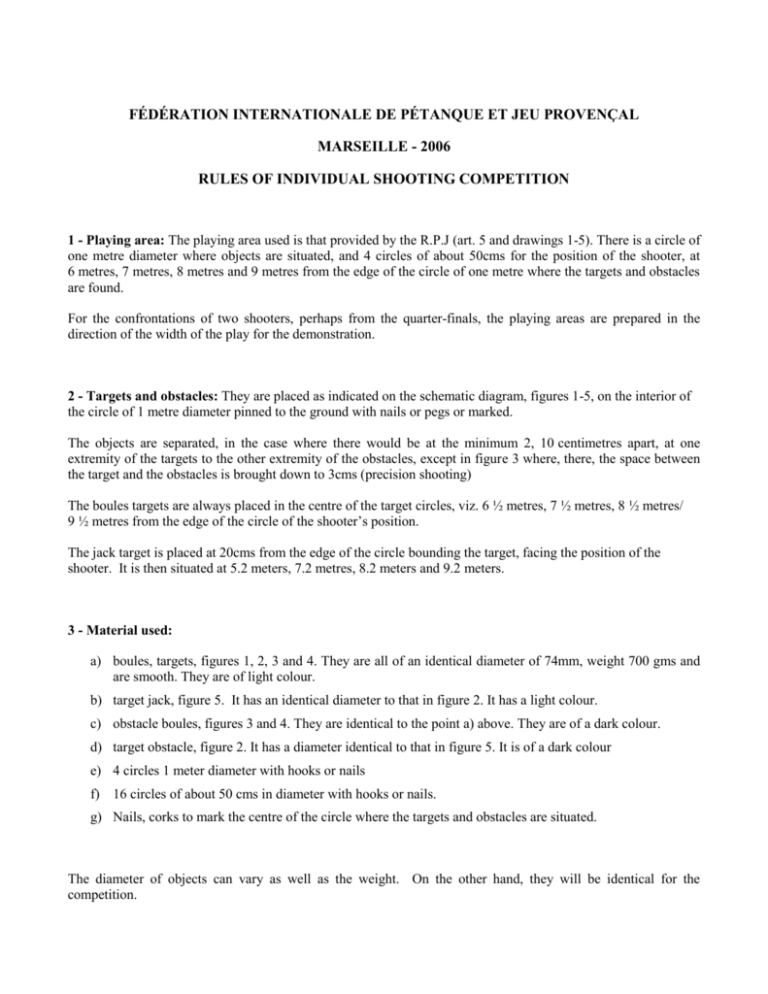
FÉDÉRATION INTERNATIONALE DE PÉTANQUE ET JEU PROVENÇAL MARSEILLE - 2006 RULES OF INDIVIDUAL SHOOTING COMPETITION 1 - Playing area: The playing area used is that provided by the R.P.J (art. 5 and drawings 1-5). There is a circle of one metre diameter where objects are situated, and 4 circles of about 50cms for the position of the shooter, at 6 metres, 7 metres, 8 metres and 9 metres from the edge of the circle of one metre where the targets and obstacles are found. For the confrontations of two shooters, perhaps from the quarter-finals, the playing areas are prepared in the direction of the width of the play for the demonstration. 2 - Targets and obstacles: They are placed as indicated on the schematic diagram, figures 1-5, on the interior of the circle of 1 metre diameter pinned to the ground with nails or pegs or marked. The objects are separated, in the case where there would be at the minimum 2, 10 centimetres apart, at one extremity of the targets to the other extremity of the obstacles, except in figure 3 where, there, the space between the target and the obstacles is brought down to 3cms (precision shooting) The boules targets are always placed in the centre of the target circles, viz. 6 ½ metres, 7 ½ metres, 8 ½ metres/ 9 ½ metres from the edge of the circle of the shooter’s position. The jack target is placed at 20cms from the edge of the circle bounding the target, facing the position of the shooter. It is then situated at 5.2 meters, 7.2 metres, 8.2 meters and 9.2 meters. 3 - Material used: a) boules, targets, figures 1, 2, 3 and 4. They are all of an identical diameter of 74mm, weight 700 gms and are smooth. They are of light colour. b) target jack, figure 5. It has an identical diameter to that in figure 2. It has a light colour. c) obstacle boules, figures 3 and 4. They are identical to the point a) above. They are of a dark colour. d) target obstacle, figure 2. It has a diameter identical to that in figure 5. It is of a dark colour e) 4 circles 1 meter diameter with hooks or nails f) 16 circles of about 50 cms in diameter with hooks or nails. g) Nails, corks to mark the centre of the circle where the targets and obstacles are situated. The diameter of objects can vary as well as the weight. On the other hand, they will be identical for the competition. 2 4 Validity of the shot The shot is valid when the impact of the shot takes place inside the circle where the targets and obstacles are situated. Score 1 point: The shot is valid when the target boule is hit correctly without leaving the circle. For figures 2 and 4 if the obstacle object is hit by the returning shooting boule whatever the positions of the target boule, jack or obstacle boule as also the shooting boule. For figure 3 if the impact of the shot is the target boule and one or two black boules are hit. Score 3 points: The shot is valid when the object, hit correctly, completely leaves the circle. This applies for figures 1, 2, 3 and 4. For figures 2, 3 and 4, the obstacle boules or jack must not move. The shot is valid figure 5 if the target jack is hit correctly and does not leave the circle where it is situated. Score 5 points: The shot is valid if the shooting boule does not leave the circle in which the targets and obstacles are situated (carreau) figures 1, 2, 3, and 4. For figures 2, 3, and 4 the obstacle boules or jack must not move. The shot is valid figure 5 if the target jack leaves the circle where it is situated after having been correctly hit. Maximum score for the series 100 points. 5 – How the test takes place - Each shooter must effect a complete series of 20 shots from figure 1 to figure 5, this on a playing area for the two eliminating phases.The first eliminating phase will retain the 4 best results for the ¼ finals and the 16 following for the second phase. The second eliminating phase will hold the best 4 qualified results for the ¼ finals. For the two eliminating phases it will be the Control Table who will give the team the times that the Individual Shooting Competition will take place depending on when the teams are free. The time allowed between the shooting boules is 30 seconds. An Umpire will hold the points score sheet and the rest of the shooter’s team will put the objects back in place for their team-mate. As from the ¼ finals, the competition will take place in matches of two shooters. Therefore, two parallel terrains with 2 shooters at the same time. The opponents shoot one after the other from figure 1 at 6 meters, up to figure 5 at 9 meters. They have 30 seconds maximum per boule shot. The draw puts the 1st in the first phase against the 4th from the second phase, the 2nd from the first phase against the 3rd from the second phase, the 3rd from the first phase against the 2nd result from the second phase and the 4th from the first phase against the 1st from the second phase. For the semi-finals, the first result will oppose the 4th and the 2nd against the 3rd from the ¼ finals. The final will be made by opposing 2 competitors at the same time. 2 3 The best-placed player will start the order of shooting in the matches of two. In case of equality during the first phase, for the 4 best results, it will be the number of times 5 points gained by target and then the number of times 3 points gained per target which will be the determining factor. For the 16 qualified for the second phase, in case of equality one could increase the number of qualified counting the number of identical results to the total points. For the 2nd phase, for the first 4 it will be the same procedure as for the first 4 of the first phase. For the 2 player confrontations, perhaps from the ¼ finals, one starts with 5 shots, 1 per figure at 7 metres only, perhaps a new points count, maximum 25 points, this in the same order in the match. In case of equality once more, one would apply the same procedure. To put the objects back in place, the other members of the team, represented by the shooter will execute this task. One Umpire per terrain is necessary to announce the results to the markers. Additionally, the Umpire or an Official will superintend the position of the feet in the circle the shooter’s position. (1 Umpire or Official for the two terrains). Further, there will be one marker per terrain. People needed per terrain: 3 people, for one match on 2 terrains: 4 people. 6 - Registration - There can only be one competitor per region. They can only be champion of champion competitors who have the right to be registered, except the holder of the title who can represent his region without being part of the composition of the team which is participating in the Champion of Champions. 7 - Price and Title - The four first of the test will receive medals (two the bronze medal) and the winner the World Champion shirt. It will be given by the Fédération Internationale de Pétanque on the podium for the presentation of prizes. The raising of the flags and the National Anthem for the winner will be played. 8 - If there is an incident during the course of the competition – (power cut, storm, public invasion (thrown objects or laser ray etc).not directly implicating the player, it must be annulled It must start again as soon as possible, with the same players starting at figure number 1. 9 – Lateness – At the first call, the player has 5 minutes to present himself on the playing area. In case of absence he is called a second time, but he starts the end with a penalty of 5 points. If he does not present himself 5 minutes after the second call, he is eliminated. 3
